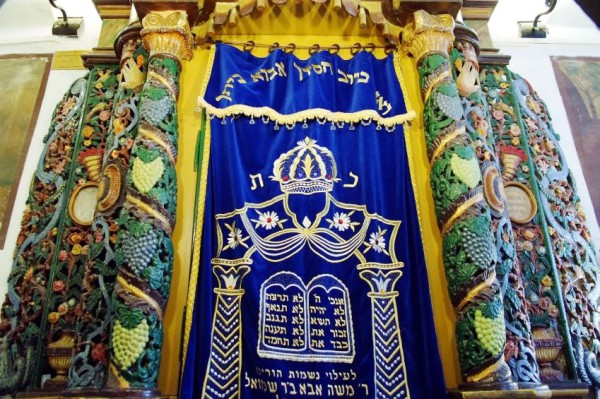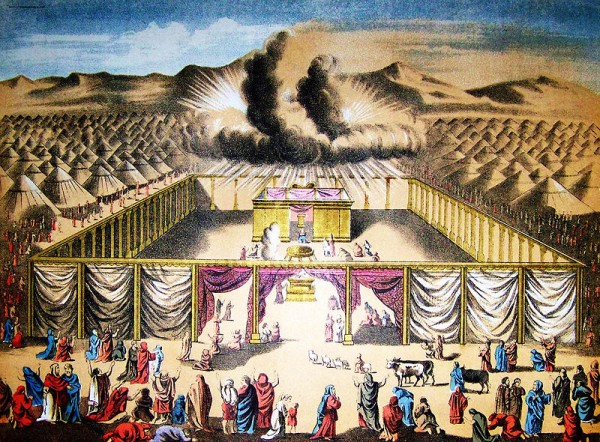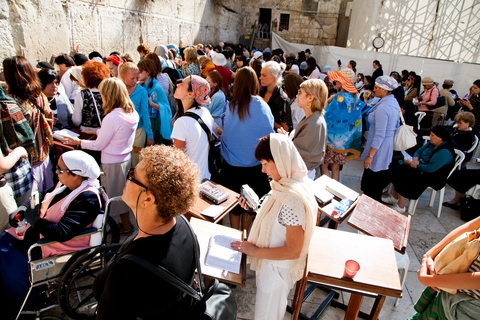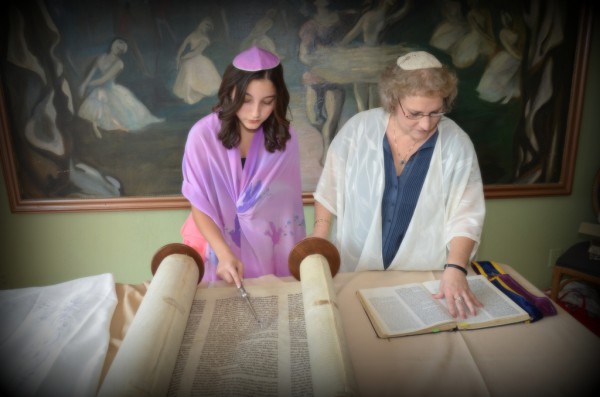VAYAKHEL (And He Assembled)
Torah Portion: Exodus 35:1–38:20; John 6:1–71
Shabbat Shekalim Haftarah: 2 Kings 12:1–17; Maftir: Exodus 30:11–16
In the last few Parashiot of Terumah, Tetzaveh and the first part of Ki Tisa, God instructed Moses regarding the making of the Mishkan (Tabernacle, dwelling place), its vessels, and the priestly garments.
In this week’s readings, the glory of the Lord filled the Temple after the work of building it was completed.
Completing the Temple
“How lovely is your dwelling place [Mishkan], Lord Almighty [Lord of Hosts]! My soul yearns, even faints, for the courts of the Lord; my heart and my flesh cry out for the living God.” (Psalm 84:1–2)
Vayakhel records the actual implementation of God’s instructions on how to build the Mishkan, which was recounted earlier in Parasha Terumah.
Indeed, Vayakhel is almost repeated word for word in Terumah, with one notable change: the instructions in Terumah that were prefaced with the words “and they shall make” are now written with “and they made.”
The Tabernacle and the Sabbath
“For six days, work is to be done, but the seventh day shall be your holy day, a day of Sabbath rest to the Lord. Whoever does any work on it is to be put to death. Do not light a fire in any of your dwellings on the Sabbath day.” (Exodus 35:2–3)
The people stood prepared to begin the construction of the Tabernacle. But even as important as this work was, Moses brought to their attention, yet again, that they must not work on the Shabbat (Sabbath).
The holiness of the Sabbath was not to be violated even for the sacred purpose of building the Tabernacle.
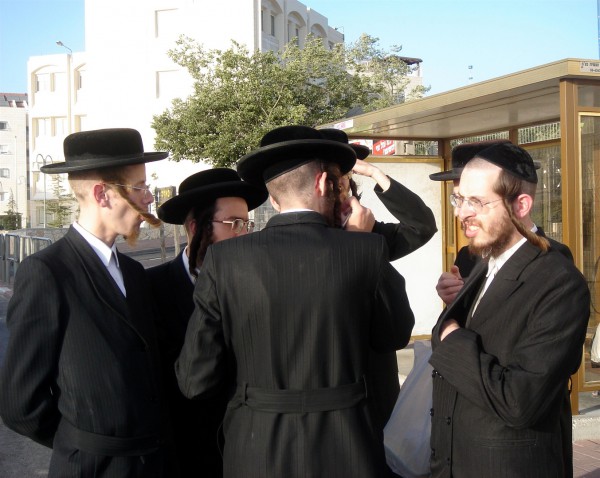
The Shabbat, which is kept diligently by ultra-Orthodox Jews, is a festive day that offers opportunity for prayer, reading of the Hebrew Scriptures, and spending time with the family.
Building the Tabernacle: A Community Affair
Regarding the building of the tabernacle, God stirred up the hearts of the people to bring their offerings for the work of the Lord. It was not just Moses’ private project; it was a community affair, so each one contributed what they could from their material resources.
Some prepared the holy garments, while others prepared the anointing oil, and the sacred vessels, etc. Everyone worked together toward this common goal.
Similarly, none of us can do the work of the Lord alone.
Building up the body of Messiah must be a communal work—each one whose hearts are stirred by the Lord, giving what they are able. Some use their talents and others give their material resources. Many give both.

A Jewish boy is ready to give his best gift to charity by depositing his coins in the pushka (offering box).
A Joyful Outpouring of Resources
“The people have given more than enough materials to complete the job the Lord has commanded us to do!” (Exodus 36:5)
The Israelites were so overjoyed to give to the building of the Mishkan (Tabernacle) that they gave enthusiastically.
So generously did they give that they actually had to be restrained from giving more! (Exodus 36:3–7)
God responds to the cheerful giver with love and generosity, and He multiplies the seed sown so that there is no lack.
“Each of you should give what you have decided in your heart to give, not reluctantly or under compulsion, for God loves a cheerful giver. And God is able to bless you abundantly, so that in all things at all times, having all that you need, you will abound in every good work.” (2 Corinthians 9:7–8)
If everyone whose heart was stirred by the Lord gave what was in their heart to give, there would be more than enough to meet every need.
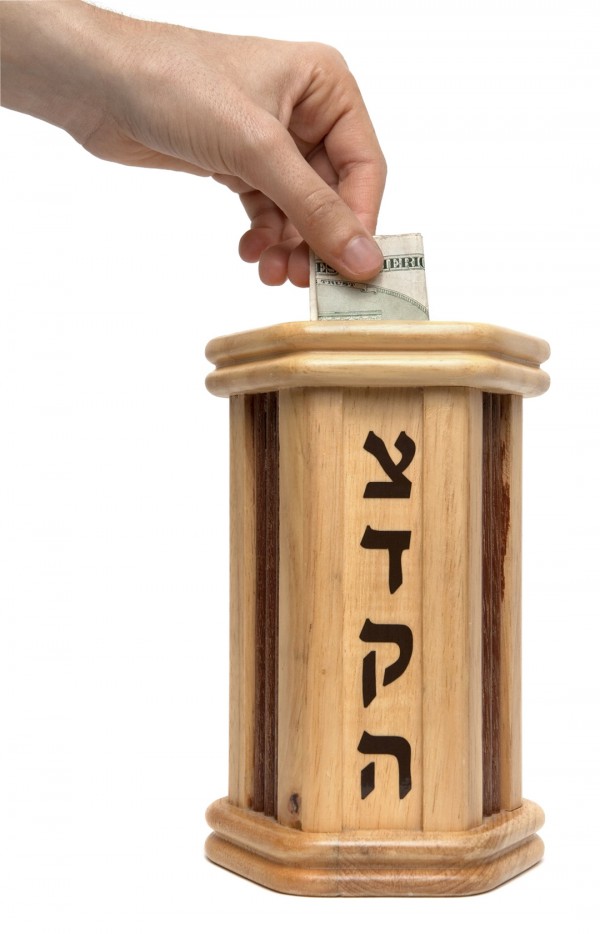
The Hebrew word on the pushka (offering box) depicted above is tzedakah, which literally means righteousness, but is commonly used to signify charity.
The Widow’s Mite
It’s not so much the amount of the offering but the amount of sacrificial love with which it is given that counts to the Lord. In chapter 21 of the Gospel of Luke, Yeshua (Jesus) observed the rich putting their gifts into the Temple treasury.
He also witnessed a poor widow putting in two leptons, which are called “mites” in the King James translation of the Bible.
In Yeshua’s day, a lepton (Greek for small or thin) was the smallest denomination of coins. Like pennies today, they would hardly be considered worth the effort of stooping to pick one up off the street.
Her two mites were not going to make an appreciable difference in the upkeep of the Temple, but Yeshua took special notice of this tiny offering and gave this widow a great honor.
What might be considered an insignificant offering by some has been recorded and is still read about two thousand years later!
Yeshua actually valued this poor widow’s offering more than the generous offerings of the rich. “I tell you the truth,” Jesus said, “this poor widow has given more than all the rest of them. For they have given a tiny part of their surplus, but she, poor as she is, has given everything she has.” (Luke 21:3–4)
Offerings of Time and Talent
“Whatever you do, do it all for the glory of God.” (1 Corinthians 10:31)
It wasn’t only financial offerings that the people gave to complete the work of building the Tabernacle. They also gave of their gifts and talents.
In some individuals, such as Betzalel (see last week’s Parasha Ki Tisa), God placed His Spirit of wisdom and understanding for a specific artistic gifting to complete the building of the Mishkan.
Likewise, God gives each one of us gifts to be used for His glory. Just as God gave explicitly detailed instructions for the building of the Tabernacle, and not just a general outline, we may also seek the Lord for specific instructions on what He wants us to do for Him.
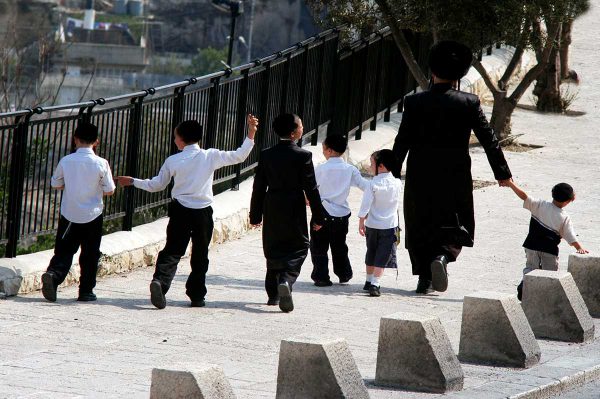
An Orthodox Jewish father and his children walk in Jerusalem.
Shabbat Shekalim
This week begins the first of four Parshiot leading up to the festivals of Purim (February 28–March 1) and Passover (March 30–April 7). That’s right! These two holidays are just around the corner!
Because this week’s Shabbat is Shabbat Shekalim (שבת שקלים / Sabbath of Shekels), a special reading called a maftir is added. Maftir shares the same root as Haftarah — FTR, which means to conclude.
This week’s special reading concludes the Torah portion and is taken from Exodus 30:11–16, which pertains to the half-shekel tax for the Tabernacle.
Shekalim is the plural form of the Hebrew word shekel, which was the currency of ancient Israel. It is also used today in the modern state of Israel.
Every Jewish adult male (20 years and older) was required to give half a Biblical shekel toward the building and maintenance of the Tabernacle.
Nationally, rich and poor alike set aside personal interests and were united by contributing equally to the goal of building the Tabernacle.
In remembrance of the half shekel, at this time of year, some Jewish people contribute to institutes of Jewish learning.
Shabbat Shekalim, perhaps, is also a good reminder of the importance of financially contributing to the upkeep and operating costs of those who are doing the work of the Lord.
“All who cross over, those twenty years old or more, are to give an offering to the Lord. The rich are not to give more than a half shekel and the poor are not to give less when you make the offering to the Lord to atone for your lives. Receive the atonement money from the Israelites and use it for the service of the tent of meeting. It will be a memorial for the Israelites before the Lord, making atonement for your lives.” (Exodus 30:14–16)
During Temple times, the half-shekel tax, called machatzit hashekel, was due yearly on the first of Nissan.
The collection of this tax was significant and practical. Since Passover begins on Nissan 14, these extra funds allowed for the purchase of sheep for the communal sacrifices.
The call for the tax was issued to the people at the start of the previous month, Adar, giving people time to prepare their payment before the annual pilgrimage to Jerusalem for Passover.
Funds also contributed to the upkeep of the Temple and its vessels, the roads and pathways to the Temple, wages, and the maintenance of the ritual baths called mikvot for the customary pre-Passover purification. If a mikvah were not properly maintained, then it would not be kosher and could not be used for ritual purposes.
Shabbat Shekalim, then, is a wonderful time to renew our commitment to be faithful in our support of those places doing the work of the Lord and where we are being spiritually fed.




